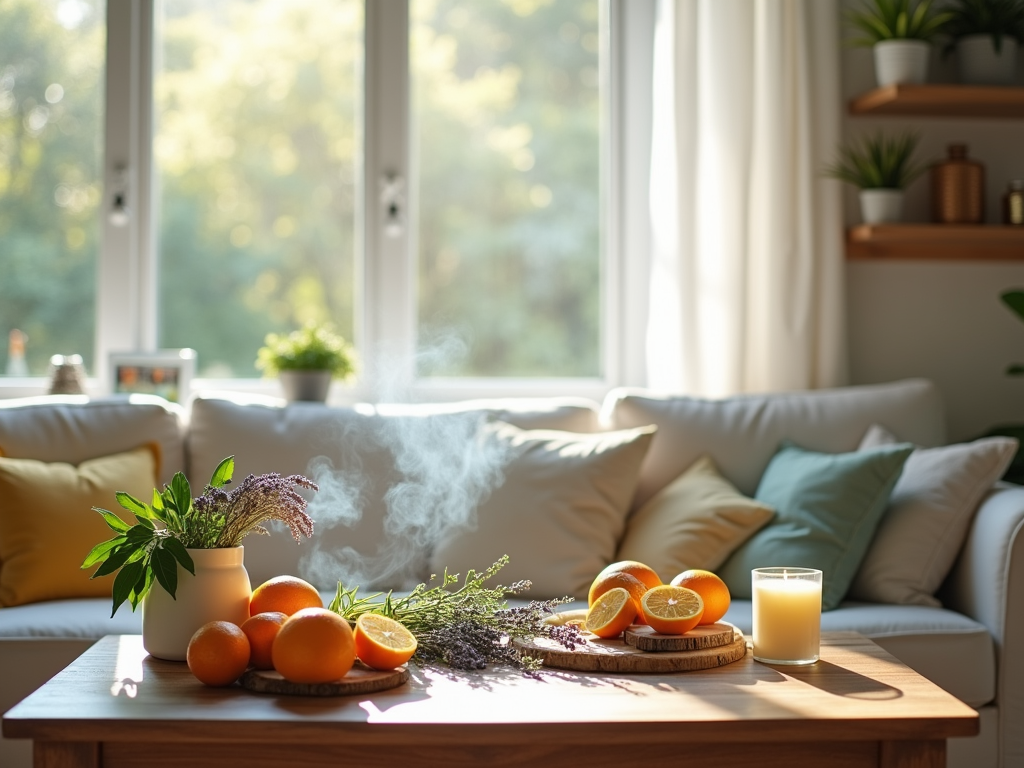
Many popular home fragrance products present hidden dangers. Sprays, candles, and plug-ins often emit harmful substances like volatile organic compounds (VOCs), including formaldehyde and phthalates. These chemicals can compromise indoor air quality, affecting overall health. Their harmful effects range from mild eye and throat irritation to hormone disruption, respiratory problems, and, in some cases, longer-term health concerns.
Key Takeaways
- Fragrance products release VOCs and phthalates, reducing air quality and posing health risks.
- Common symptoms from exposure include headaches, respiratory irritation, and aggravated asthma or allergies. Those prone to these issues may feel the effects more severely.
- Pregnant individuals, children, and anyone with pre-existing health conditions face greater risks from these compounds.
- Synthetic ingredients like phthalates and musks don’t break down easily and can disrupt hormones over time.
- Safer options exist, such as essential oils, homemade fragrance sprays, and the use of houseplants to naturally improve air quality.
If you’re looking for safe ways to maintain a pleasant atmosphere, consider alternatives that eliminate chemical risks. Essential oils provide versatile, natural fragrances. For a personal touch, try creating your own sprays using purified water and select oils for a mix of safety and aroma. Houseplants, beyond their aesthetic value, contribute positively by naturally filtering airborne toxins. Choosing these methods allows for a healthier, more inviting environment.
The Hidden Health Risks of Your Favorite Home Scents
Many home fragrances, including sprays, candles, and plug-ins, emit volatile organic compounds (VOCs) like formaldehyde, benzene, and toluene. These compounds don’t just linger in the air; they can seriously harm the quality of what you’re breathing. When released, VOCs contribute to poor indoor air quality, which affects the comfort and safety of your living space.
Exposure to VOCs from home fragrances has been associated with various health issues. Eye irritation, breathing difficulties, and frequent headaches are just some of the problems people may experience. If someone in your household already has allergies or asthma, these chemicals can exacerbate those conditions. Studies have found that homes using air fresheners and similar products often have higher levels of indoor air pollution than homes that avoid them altogether.
If you’ve ever wondered how to fragrance your home naturally without the reliance on synthetic options, there are healthier ways to go about it. Whether it’s skipping the harsh chemicals or opting for DIY alternatives, you can still enjoy a beautifully scented home without compromising your health.
How to Avoid Hazardous Ingredients
Pay attention to labels on your favorite products. Words like “paraffin wax,” “synthetic fragrance,” and “preservatives” can be red flags. Curious about whether candles are a safer choice? You might find additional insights about candles and their health impacts helpful before lighting that next wick.

Unmasking the Chemicals Found in Fragrance Products
Home fragrances might seem harmless, but the reality of what’s inside them tells a different story. Many of these products rely on a cocktail of chemicals to create their scents. A key culprit is phthalates, often used to make the fragrance last longer. These substances are linked to hormone disruption and can mess with your body’s endocrine system. Over time, phthalates might build up in the body, increasing the risk of reproductive health issues and developmental problems. Studies have even shown that homes with heavy use of fragranced products have higher concentrations of phthalates in the air.
Another common ingredient is synthetic musks. While they replicate the allure of natural scents, they’ve raised red flags due to their ability to linger in the body, contributing to potential long-term health complications. These musks are known to persist in the environment too, adding a layer of ecological concern.
If you’re looking for safer ways to freshen your space, I’d recommend checking out ways to fragrance your home naturally. Simple swaps like essential oil diffusers or scented sachets can cut out exposure to these potentially harmful chemicals while still making any room smell wonderful. It’s really about knowing what’s in the products you use every day and finding options that are healthier for both you and your home environment.
The Groups Most Vulnerable to Fragrance Exposure
Individuals with asthma or allergies can often experience worsened symptoms due to home fragrances. Children, pregnant women, and older adults are also at greater risk of negative effects. For those with asthma, strong scents might cause wheezing, coughing, or even full-blown attacks. Allergies can be triggered by synthetic chemicals commonly found in these products. It’s estimated that 7-10% of children and adults in the U.S. have sensitivities or conditions aggravated by fragrance use.
To minimize risk, consider creating safer environments:
- Switch to fragrance-free or low-emission products.
- For natural alternatives, consider essential oils or explore ideas from natural home fragrance tips.
- Ensure living spaces have proper ventilation.
- Test new products on small areas to check for reactions.
These steps help protect vulnerable groups, reducing possible respiratory and allergic responses.

Are Natural Alternatives a Safer Choice for Your Home?
Natural options like essential oil diffusers, houseplants, and improved ventilation can make a healthier difference in your space. They help reduce reliance on synthetic fragrances, which often emit higher levels of potentially harmful VOCs. I’ve found that certain essential oils, like lavender, tea tree, or lemon, can even purify the air when used sparingly. Lavender oil, for instance, leaves a calming and clean scent without overwhelming your environment.
DIY fragrance methods also work wonders. Simple recipes for room sprays or potpourri use safe ingredients—think dried herbs, citrus peels, or even cinnamon sticks. Pair this with fresh air by improving ventilation, and your home will feel balanced naturally. Houseplants are another quiet hero, as they naturally filter toxins from the air. If you’re curious about creating your own blends, check out how to make fragrance at home for a non-toxic approach packed with benefits.
Sources:
American Lung Association
Environmental Protection Agency (EPA)
National Institute of Environmental Health Sciences (NIEHS)
Hidden Hazards: The Chemicals in Your Air Fresheners – Consumer Reports
Fragrance and Health – Women’s Voices
